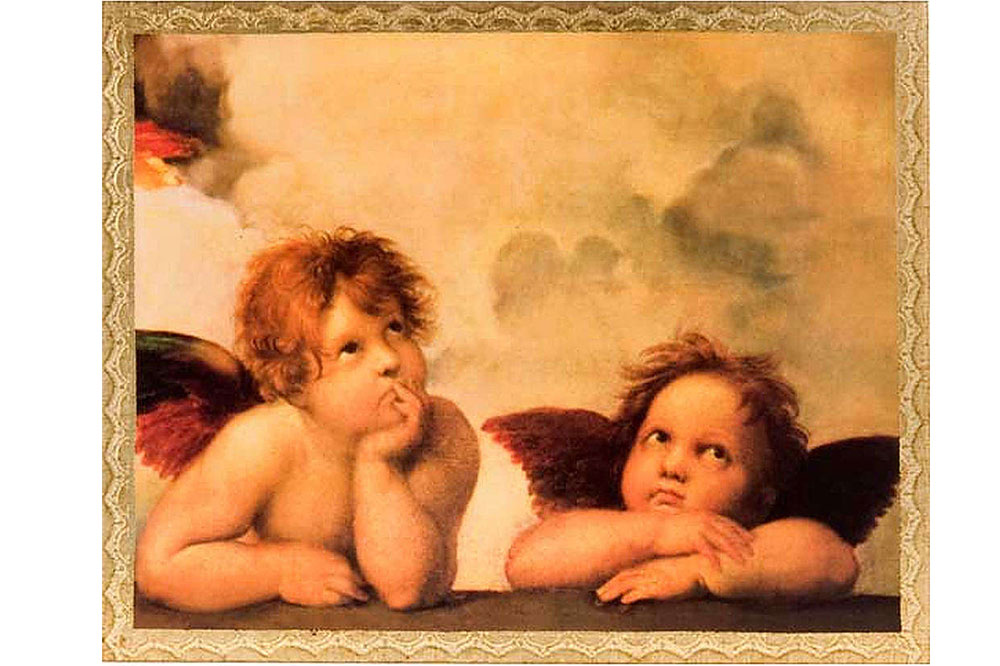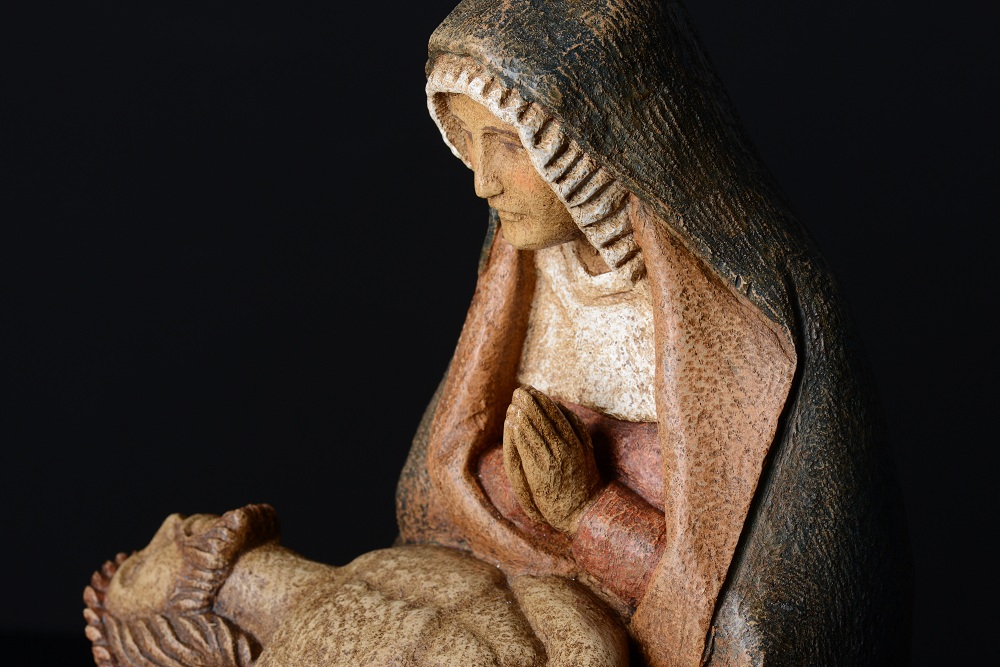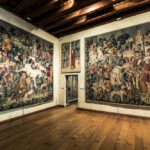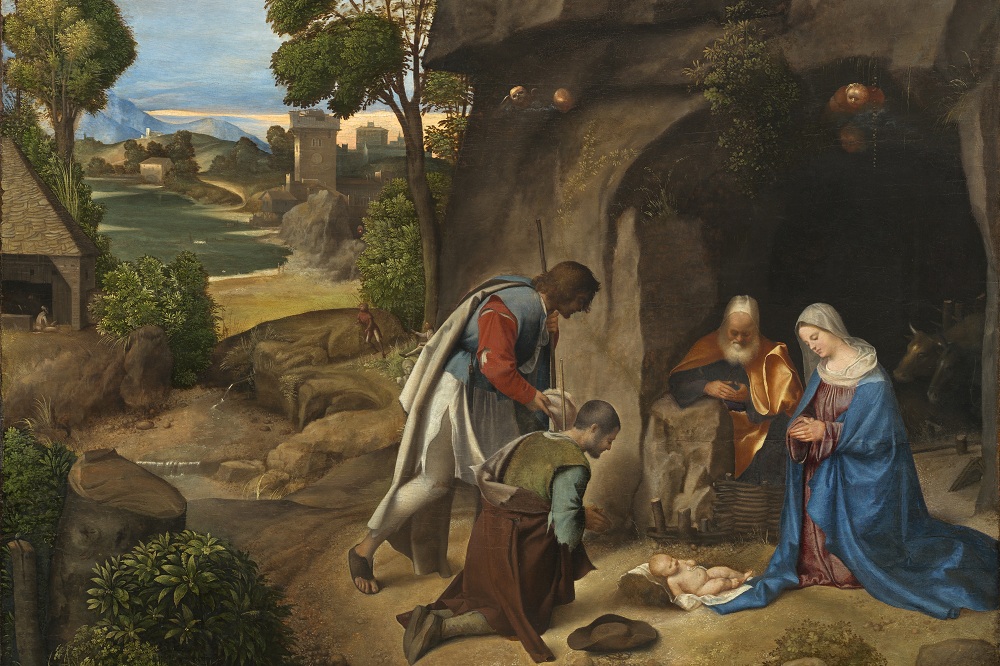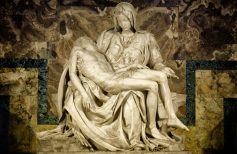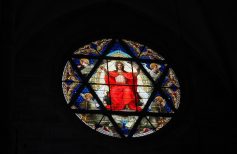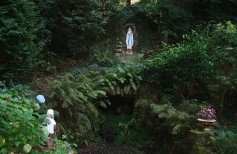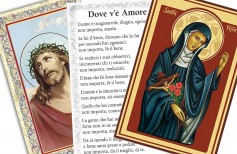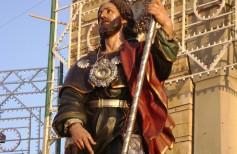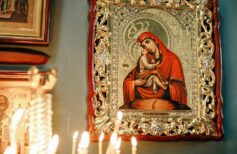Contents [hide]
Since the origins of Christianity, people felt the need to reproduce the object of their devotion, or something that recalled it, in a tangible and visible way. For the first Christians, forced to hide their faith, this was often unavoidable, and was manifested through carving of symbols and messages that only other members of the sect could understand, so that they could communicate their faith to each other without risking persecution.
With time, with the affirmation of Christianity as official religion and its amazing spread all over the known world, the realization of sacred images has had an unstoppable boost.
The reasons for this spread can be found in many factors.
Even though many ancient (and also modern) religions were iconoclastic, that is, they prohibited the representation of divinity, Christianity never condemned the realization of pictures, statues, artistic and artisanal works of any kind that showed the image of God, Jesus, Mary or the Saints. On the contrary, this kind of works was pushed since the very start, because it was the only way, along with the priests words, to share the faith precepts with common people. The possibility to see some episodes of Jesus life depicted on churches walls, or to admire a picture representing Mary’s sweet face, or even an image showing the hieratic sanctity of a martyr, was an even more powerful tool for dissemination of faith than words themselves. The human mind is susceptible to images, it captures and interprets them more easily than it can get from words, and during past centuries this was even more true, given the scarce culture and the low level of education in the majority of people.
We need to say that even though the Bible condemns idolatry, it must be kept separated from the devotion raised by a sacred image, picture or print. In many ways these images of Jesus, Mary and the saints became real sacred decors that cannot miss in our churches, but also in our homes. On the contrary, placing a sacred image of any kind in our homes should be an unavoidable necessity for a Christian. It is a way to keep our own devotion alive, to give ourselves the chance to dedicate even brief moments to the adoration of God in every moment of the day, through something that represents him, that directly or indirectly recalls Him. The veneration of a sacred image pushes us closer to the sky, because it is not addressed to the object itself, the sacred picture or print, but to what it stands for.
The fact that most of the sacred images available on the market are reproductions of famous pictures or frescos, of works of art that belong to our history and culture, makes them decor elements that can make our homes beautiful and elegant, giving it value. Formerly, being able to decorate homes and palaces with sacred images on walls, furniture and furnishings, was a distinctive sign of wealth and nobility. That way people showed their devotion towards God, and at the same time, they could show off their wealth without sinning in vanity.
In our times, when showing our own spirituality is mainly an intimate and interior matter, placing a sacred image in our homes is most of all a personal choice of faith, but the choice of which image we should show depends on our personal taste, our sensitivity, and of course, on the style and interior design of our homes.
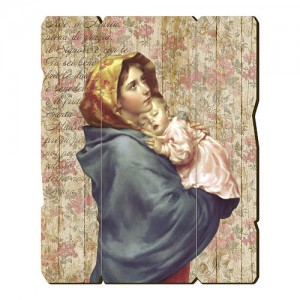
Some sacred images are now part of the modern iconography so much that they go beyond their original meaning.
Madonnina of Ferruzzi
Let’s think about the Madonna and child by the Dalmatian painter Roberto Ferruzzi. With this enchanting picture the painter won the Venice Biennale in 1897. The painting depicts a sweet girl with her face towards the sky, in a blue dress, holding a sleeping baby in her arms. The title of the painting was “Maternity”, but was immediately changed into “Madonnina”, because everyone associated that delicate maiden image with the Virgin Mary, and the baby in her arms with Jesus. The Alinari Brothers, owners of the namesake photo studio, bought the painting at a remarkable price, and with it they also acquired all the rights to reproduce it on any support and in any format. That is how the fortune of the Madonnina of Ferruzzi began, which was actually the portrait of Agelina Cian, a girl from Luvignano aged eleven, holding her baby brother Giovanni in her arms. Unfortunately Angelina had a tragic destiny, becoming a widow while still very young, and ending her days in a mental institution. But the picture that represents her became one of the most recurrent sacred images in Christian homes, for her beauty, the sweetness it conveys and for the elegance that makes it a wonderful decor, besides being a devotional object.
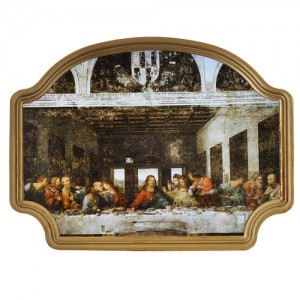
Ultima cena by Leonardo da Vinci
There is no need to give much explanations to the Last Supper by Leonardo da Vinci, one of the most celebrated masterpieces of the Italian Renaissance, kept in the former refectory of the Sanctuary of Santa Maria delle Grazie in Milan. It was commissioned by Ludovic the Moor, who chose the church of Santa Maria delle Grazie as place for the celebrations of the Sforza family; it was realized as a fresco, but using a technique that was usually meant for paintings on canvas, which emphasized the brightest areas, but that was not suitable to last on walls. Irremediably ruined by time, bad weather and men, the fresco was restored after a long and patient work that lasted 20 years, and was declared world heritage by Unesco in 1980. The work represents the Last supper of Jesus with his apostles, and exactly the moment described in John’s Gospel 13:21, when Jesus states that he will be betrayed by one of them. It is a worldwide recognized image, but nevertheless it has amazing charm and emotional impact. A reproduction of the Last supper by Leonardo, maybe with a beautiful golden important frame, makes it a picture for the living room, or a quality hall, or anyway an environment that can emphasize its solemnity, its artistic and spiritual value.
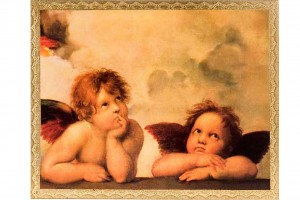
Raphael’s Angels
A completely different impression, but not less fine, is given by a print of Raphael’s Angels. It is a detail of one of the most famous and celebrated paintings by Raphael, the Sistine Madonna. In the painting, Mary seems descending form the sky with the Baby in her arms, on a background made of countless cherubs heads merging with the clouds, between Saint
Sixtus Pope and Saint Barbara. On the lower edge, there is a parapet on which these two thinking angels are leaning, which became a sacred image on its own with time, almost more famous than
the whole painting. Raphael’s angels, looking so delicate and a bit naughty, bring joy and light heart to the house, and can be a perfect print on wood to hang in the kids room, or anyway, someone young.
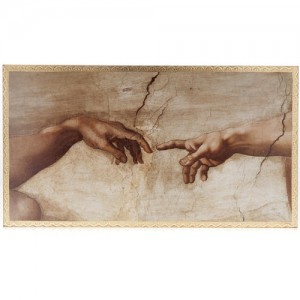
“The creation” by Michelangelo
Another option for wooden print, but also on other formats, the Creation of the Sistine Chapel in the Vatican Museums in Rome can look good in homes. Among the masterpieces by Michelangelo, this one is undoubtedly one of the most complex and hard ever made. Stylistically speaking, the Sistine Chapel Creation represents one of the highest point of modern art history. To ultimate it, the artist took 16 days, beginning from the image of God and the Angels, and later painting the image of Adam. The suggestive position of the two main characters, with their arms reaching out just one moment before touching each other, represents the strength of the divine creation flame in an exceptional way, passing from God to his “creature”, and the latter reflects the same move, awakening God’s strength. An important painting, suitable for any room of a house, but specifically for living rooms or bedrooms.
Madonna of Lippi
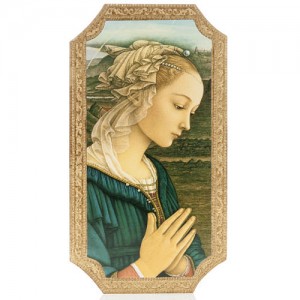
Another option for the bedroom, but actually wonderful for any room of the house, could be a printed and shaped wooden board of the Madonna with Child and angels called Lippina, by Filippo Lippi. The original painting, tempera on panel kept at the Uffizi Museum in Florence, is one of the most famous from the Florentine artist and friar, and surely represents a point of reference for all later artists, at least for what concerns the representation of the Madonna and Child.
The painting depicts a Madonna with a sweet but sad face, contemplating her Baby in her arms as if she wanted to protect him with prayer and her love from the tragic destiny that awaits him (the Passion). The pleated dress, her hairdo, the veils, the pearls as symbol of pureness, all are expression of the unrivaled mastery of the artist.
Two angels are next to the Madonna, one is smiling in the foreground, while the other is partially hidden behind the baby’s arm. The naughty smile of the angel in the foreground compensates for the drama of the painting and its suffused sadness.

